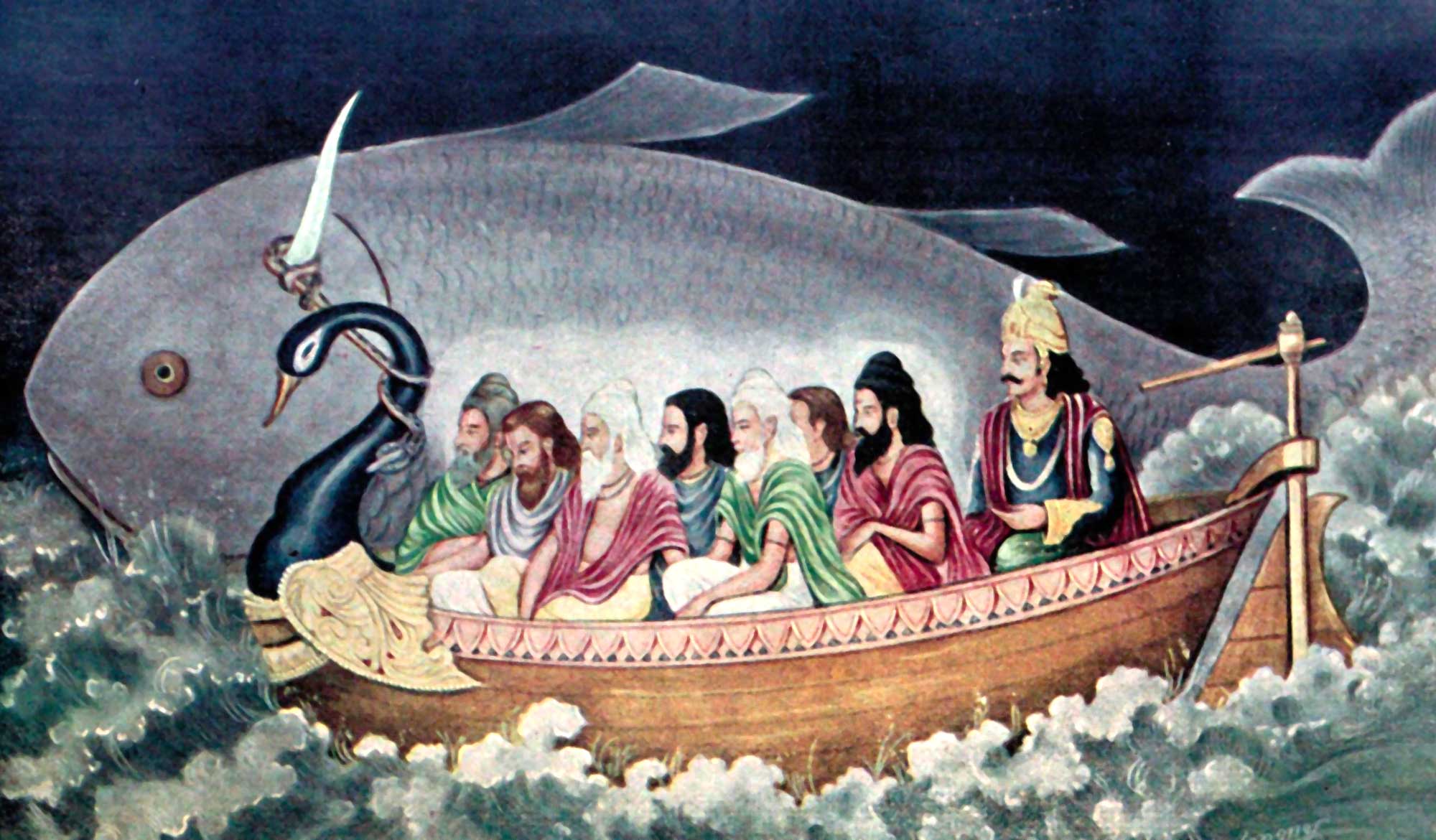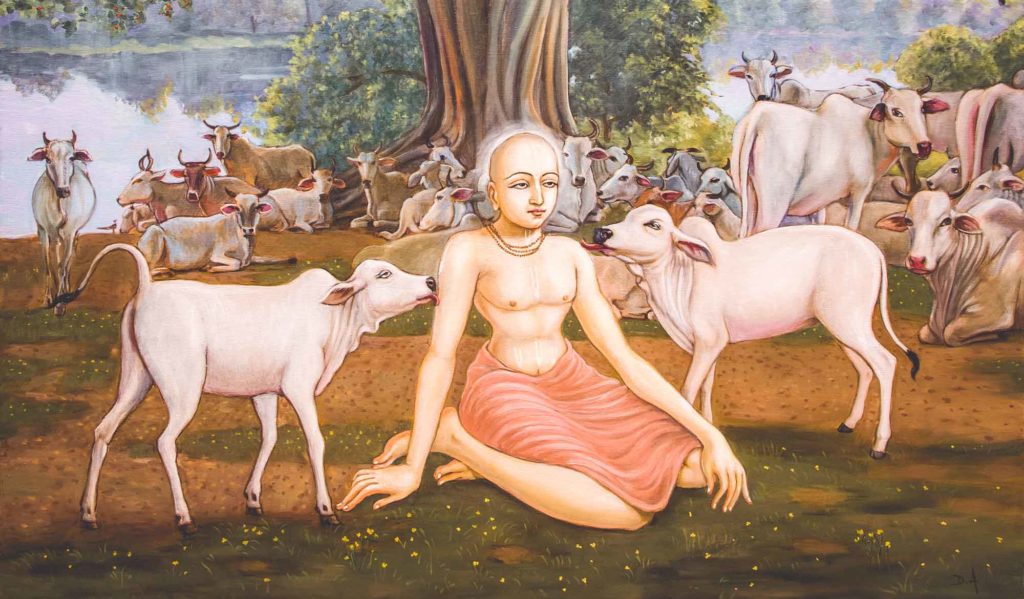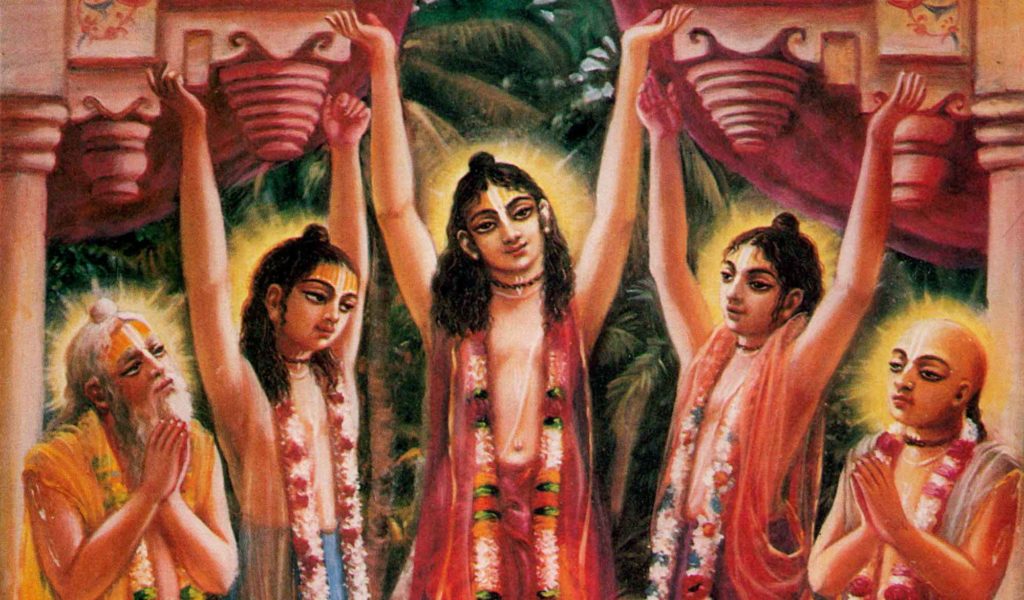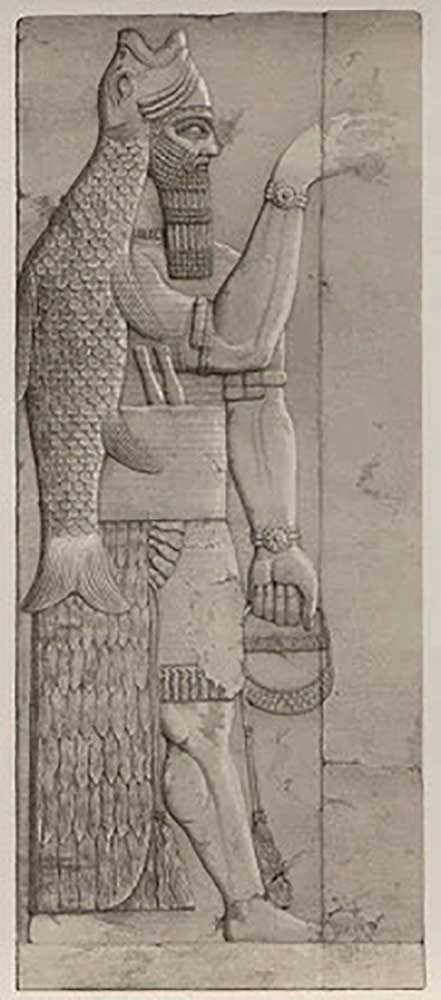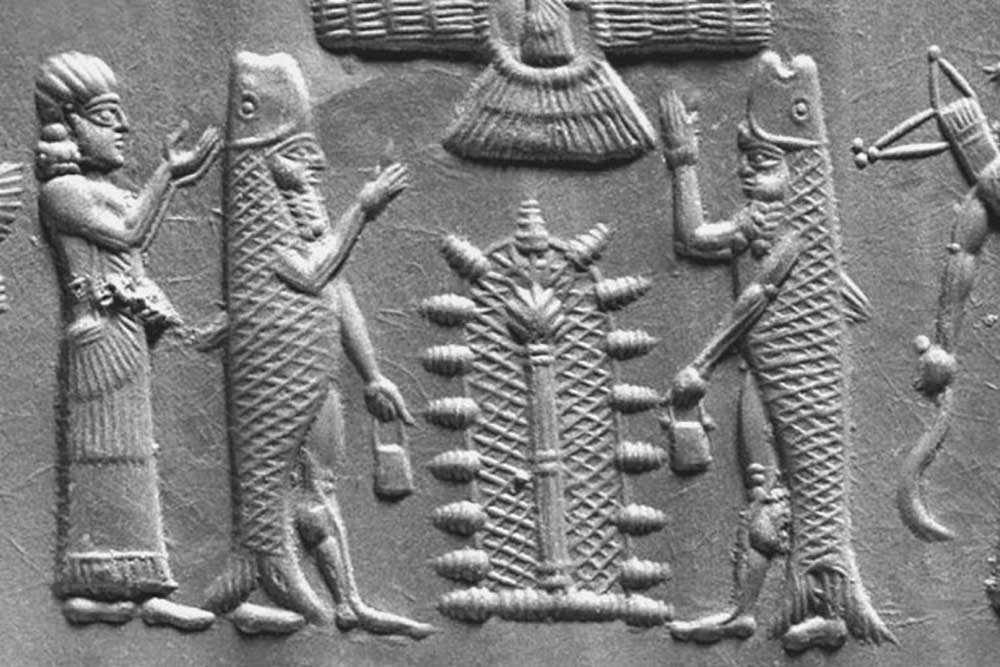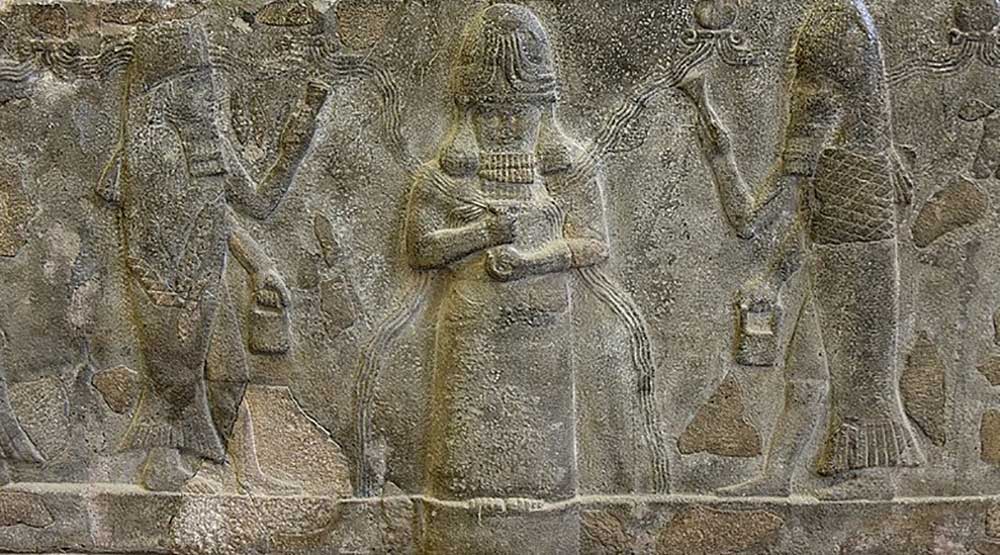Overview
In 'The Great Flood - Are Manu and Noah the Same Person?' Kalki Dasa explores the ancient flood myths from around the world and particularly those from ancient India and Mesopotamia. This article finds the connection between all these stories and a common source from which they may have originated - as well investigates whether or not this ancient flood actually occurred.
Question: Is there any connection between the great flood mentioned in the Bible and the story of Manu from the Purāṇas?
Answer: At least 400 different cultures spread around the world speak of a great flood which wiped out major civilisations, and how a hero rose up to save humanity. That such advanced civilisations have been lost to memory during such a flood brings to our minds the legends of Atlantis and Lemuria.
 (Sunken archaelogical site off the coast of Japan)
(Sunken archaelogical site off the coast of Japan)
The Mesopotamian civilisation of Sumer is considered to be one of the oldest civilisations in the world at around 6,000 years old. The Sumerians preserved their histories on clay tablets, many of which are still kept in museums around the world. Three different Sumerian epics recorded on these clay tablets all speak of the same story — that the gods became angry with their human slaves and decided to send a flood to wipe them out. One of the gods, Enlil, (the storm god) warned one King Zuisudra of the impending doom by speaking to him through a wall of reeds.
“(Reed wall) Listen to me! Make sure you attend to all my words! Dismantle the house, build a boat, reject possessions, and save living things. Roof it like the Apsu so that the Sun cannot see inside it! Make upper decks and lower decks. The tackle must be very strong.” He opened the sand clock and filled it. He told him the sand needed for the flood was seven night’s worth. (Atrahasis, tablet iii)
“All the evil winds, all stormy winds gathered into one and with them, the flood was sweeping over the cities of the half-bushel baskets, for seven days and seven nights. After the flood had swept over the country, after the evil wind had tossed the big boat about on the great waters, the sun came out spreading light over heaven and earth.” (Eridu Genesis, tablet ii)
“When a seventh day arrived I sent forth a dove and released it. The dove went off, but came back to me; no perch was visible so it circled back to me. I sent forth a swallow and released it. The swallow went off, but came back to me; no perch was visible so it circled back to me. I sent forth a raven and released it. The raven went off, and saw the waters slither back. It eats, it scratches, it bobs, but does not circle back to me. Then I sent out everything in all directions and sacrificed a sheep. I offered incense in front of the mountain-ziggurat. Seven and seven cult vessels I put in place, and into the fire underneath I poured reeds, cedar, and myrtle. The gods smelled the sweet savor, and collected like flies over the sacrifice.” (Epic of Gilgamesh, tablet xi)
For anyone familiar with the story of Noah’s Ark, it is obvious that the Biblical narrative is only the latest edition of the Sumerian flood epic, which was put into written form and re-recorded three times prior — around 3,000 B.C (Eridu Genesis), 1,700 B.C. (Gilgamesh), and 1,100 B.C. (Atrahasis). After the Israelites were liberated from Babylon they put this story into the Torah (500 B.C.)
“Every living thing that moved on land perished – birds, livestock, wild animals, all the creatures that swarm over the earth, and all mankind. Everything on dry land that had the breath of life in its nostrils died. He blotted out every living thing that was on the face of the ground, man and animals and creeping things and birds of the heavens. They were blotted out from the earth. Only Noah was left, and those who were with him in the ark. And the waters prevailed on the earth 150 days.” (Genesis 7)
The only element that really changed in the Biblical story was the introduction of a monotheistic god. Rather than the gods being angry with mankind and sending the flood, it was God himself who decided wipe the slate clean on his creation.
“By the twenty-seventh day of the fifth month the earth was completely dry. Then God said to Noah, “Come out of the ark, you and your wife and your sons and their wives. Bring out every kind of living creature that is with you—the birds, the animals, and all the creatures that move along the ground—so they can multiply on the earth and be fruitful and increase in number on it!” (Bible, Old Testament:, Genesis 8)
In the ancient Vedic literature known as the Purāṇas a king named Satyavrata is informed by Lord Viṣṇu (also known as Matsyāvatāra) of an upcoming cataclysmic event —
“Lord Viṣṇu said: O King, who can subdue your enemies, on the seventh day from today the three worlds — Bhūḥ, Bhuvaḥ and Svaḥ — will all merge into the water of inundation. When all the three worlds merge into the water, a large boat sent by Me will appear before you. Thereafter, O King, you shall collect all types of herbs and seeds and load them on that great boat. Then, accompanied by the seven ṛṣis and surrounded by all kinds of living entities, you shall get aboard that boat, and without moroseness you shall easily travel with your companions on the ocean of inundation, the only illumination being the effulgence of the great ṛṣis.” (Bhāgavata Purāṇa 8.24.32-35)
The Matsya Purāṇa elaborates about this event, called in Sanskrit ‘pralaya’ or the function of destruction in an endless cycle of universal creation, maintenance, and annihilation.
“Lord Matysa said, “O Great sage, for a hundred years from today, there shall be a rainfall on earth, as a result of which there would be a terrific drought and famine. Thereafter at the time of dissolution at the end of the yuga the scorching rays of the sun shall start destruction of the petty creatures.
“The submarine fire would also take to the horrible form. The poisonous fire emerging out of the mouth of Sankarśana and the fire emerging out of the third eye of lord Siva shall consume the three worlds raising high flames.
“O Great sage, when the entire earth is reduced to ashes, and the sky will be filled with heat then the entire universe with gods would be destroyed.
“There will be terrific clouds at that time — Samvarta, Bhīmanada, Drona, Canda, Balāhaka, Vidyupatāka and Śona.
“They would spring out from the vapours of the heat and drop heavy rains when all the oceans are united into a great mass. All the seven oceans shall be turned into one vast ocean. At that point of time, you owning the boat in the form of the Vedas, and carrying all the living beings in the same, tie the rope, then provided by me, with my horn. By doing so, O Great ascetic, all the gods shall be reduced to ashes, but only you people shall be saved by My influence.” (Matsya Purāṇa 2.2-6)
Furthermore, it is said in the Śrīmad Bhāgavatam:
“As Satyavrata remembered the order of Lord Viṣṇu, he saw a boat coming near him. Thus he collected herbs and creepers, and accompanied by the seven sages, he got aboard the boat. The sages, being pleased with the King, said to him: O King, please meditate upon Lord Keśava (Viṣṇu). He will save us from this impending danger and arrange for our well-being. Then, while the King constantly meditated upon the Supreme Personality of Godhead, a large golden fish appeared in the ocean of inundation. The fish had one horn and was eight million yojanas long.” (Bhāgavata Purāṇa 8.41-44)
“Śukadeva Gosvāmī continued: When Satyavrata had thus prayed to the Supreme Personality of Godhead, who had assumed the form of a fish, the Lord, while moving in the water of inundation, explained to him the Absolute Truth. Lord Matysa thus explained to King Satyavrata the spiritual science known as sāṅkhya-yoga, the science by which one distinguishes between matter and spirit, along with the instructions contained in the Purāṇas and the Saṁhitās. The Lord explained Himself in all these literatures.” (Bhāgavata Purāṇa 8.24.54-55)
The seven ṛṣis mentioned in the Purāṇika account are listed as follows:
kaśyapo ’trir vasiṣṭhaś ca
viśvāmitro ’tha gautamaḥ
jamadagnir bharadvāja
iti saptarṣayaḥ smṛtāḥ
“Kaśyapa, Atri, Vasiṣṭha, Viśvāmitra, Gautama, Jamadagni and Bharadvāja are known as the seven ṛṣis (sages).” (Bhāgavata Purāṇa 8.13.5)
In ancient Sumeria, seven sages were also mentioned in connection with the great flood. These sages, called the Apkallu are the ones who bring the knowledge of civilisation to the survivors after the cataclysm. (Interesting note: ‘āpa’ is the Sanskrit word for the water element.)
“Oannes, who accomplishes the plans of heaven and earth;
U-anna Dugga, who is endowed with comprehensive understanding;
Enmedugga, for whom a good destiny has been decreed;
Enmegalamma, who was born in a house;
Enmebulugga, who grew up in a pasture land;
An-Enlilda, the conjurer of the city of Eridu;
Utuabzu, who ascended to heaven —
The pure Puradu Apkallu, the seven sages, who have originated in the sea who control the plans of heaven and earth.” (Bit Meseri, tablet 3)
It is reasonable to suggest that Mesopotamia had contact with the Vedic culture. The names of Vedic gods such as Indra, Varuṇa, and Mitra can even be found inscribed on Sumerian cuneiform tablets. Since most of world’s history (until around 5,000 years ago) was preserved via an aural tradition, these inscriptions give some evidence of how the ancient world was far more connected than we’ve been led to believe.
However, it’s important to note a distinction between the Purāṇika legend and the other flood legends from the middle east. Although all these stories mention a great flood and the attempt by man to save living beings from the catastrophe, the ideas being communicated are not the same.
To the Mesopotamian civilisation who were mostly cattle and goat herders, the preservation of livestock was their main concern. On the other hand, the protection of animals and plants is of secondary importance in the Vedic story. Rather, the Vedic account demonstrates a culture that is based in transcendental knowledge (vidyā), and is concerned primarily with the enlightening instructions given by Lord Matsya to the king and sages. If indeed all these flood legends were derived from the same source (Ancient Bharat), it is this element that appears to be lost in later renderings.
Another influence that came to the writers of the Bible was from Persia, after the Jews were liberated from Babylon by Cyrus the Great after forty-eight years of imprisonment. The Persians brought monotheism to the Israelites, and helped them establish the religion we know today as Judaism.
Prior to the time of the Persian empire, the founder of Zoroastrianism (The state religion of Persia), Zarathustra was living in India. After losing a philosophical debate to Vasistha Muni (the famous sage) Zarathustra was exiled from India and travelled westward. Although Zarathustra’s newly created religion wasn’t accepted in India, he found support in Persia. By keeping ancient stories, places, and names of personalities from the Vedic literatures, many followers were attracted to his new religion.
In the Zend Avesta, the main scripture of the Zoroastrians, one flood legend is also told —
“Ahura Mazda spoke unto Yima, saying: ‘O fair Yima, son of Vivanghat! Upon the material world the evil winters are about to fall, that shall bring the fierce, deadly frost; upon the material world the evil winters are about to fall, that shall make snow flakes fall thick, even an aredva deep on the highest tops of mountains. Before that winter, the country would bear plenty of grass for cattle, before the waters had flooded it. Now after the melting of the snow, O Yima, a place wherein the footprint of a sheep may be seen will be a wonder in the world. Therefore oh Yima, make thee a Vara as long as a riding ground on four sides…” (Zend Avesta, Vendidad, Fargard 2)
Just see how the hero in the Persian legend is named, ‘Yima, son of Vivanghat’. After the Vedic flood story is told, King Satyavrata is given a surname which is almost identical to Yima.
“King Satyavrata was illuminated with all Vedic knowledge by the mercy of Lord Matsya, and in this period he has now taken birth as Vaivasvata Manu, son of Vivasvān.” (S.B. 8.24.58)
It’s interesting to point out how the Persian legend speaks about ‘evil winters’ and a ‘deadly frost’, terms which could suggest the flood was caused by a long winter and the resulting snow melt-off. Some have even theorised that the legend of Yima is recalling the memory of an ancient ice age.
Coming back to the story of Noah’s Ark… The connection between the Biblical story and Mesopotamia, as well as with Persia is quite obvious. Perhaps the Purāṇika history even directly made its way to the Israelites via merchants along the silk road. A closer look at the name Noah and the Sanskrit ‘nauha’ could suggest some influence as well, considering that ‘nauha’ translates as ‘boat’ in Sanskrit. The root of this word ‘nau’ is where we get the words ’nautical’, ‘astronaut’, and ‘navigation’.
So it may be concluded that there is a connection between the story of Noah’s Ark, and the Purāṇika story of Manu. But another question could be posed here — did a global flood really ever happen?
According to prominent scientists and archaeologists, a growing body of evidence suggests that something did indeed happen near the end of the last ice age — an event which would have changed the world and its climate in a dramatic way.
“I visited megalithic sites around the world, and the things I saw that were in common were massive stones often moved great distances from quarries and astonishing levels of technical precision and also cataclysmic damage – not an army moving and the knocking of noses off of statues or anything like that but where giant multi-ton blocks have been snapped in half as if they were styrofoam. What we also know is that between 12,800 and 11,700 years ago, there was a natural phenomenon known as the Younger Dryas and that’s where over the course of about a thousand years the world’s oceans rose by between 250 and 400 feet in two massive pulses. So it was a very simple phenomenon that happened but it was global in nature.” (Brien Foerster, writer/ archaeologist)
Foerster continues to explain that there are different theories for what caused this dramatic change. He also suggests that more than one cataclysmic event likely occurred during this 1,000 year span of time.
“There are different theories about this cataclysm. Some think that there were comet or comets that hit the earth, some think it was asteroids, and some think it was caused by solar activity. What they found in the northwestern part of Greenland is a meteorite or an asteroid (impact) a mile wide in diameter that had the strength of forty-seven million Hiroshima bombs. So an impact like that could have destabilised the planet. Now what that would automatically do is if you were living in the tropics, all of the sudden you would be living in a temperate area. If you were in a temperate area you would be living in the arctic or visa-versa. So that’s probably why all of the thousands if not millions of wooly mammoths that have been discovered in Siberia were found flash-frozen. One minute they were wandering through a field eating buttercups and the next minute they were in the deep arctic. A hundred and twenty-five species of these animals like the sabertooth cat, the wooly mammoth, short-nosed bear etc, they all disappeared — millions of them in the space of one-thousand years. And the standard story is that it was Native Americans crossing the bearing land bridge that wiped them all out. But there would be a small population of these people wiping out millions of these animals. Again I think it’s more likely that their habitat suddenly shifted and they could no longer survive.” (Brien Foerster)
Other scientists have suggested theories related to the sun and solar flares being the cause of the major change at the end of the last age.
“What happened at the end of the last ice age? I believe that the science now points to the sun — that it was a major solar outburst that hit the earth in 9,700 BC that literally snapped us out of the last ice age. If you have plasma outbursts coming from the sun it will cause massive destruction, it will dramatically warp the climate. If you are in an ice age it’s going to melt the ice. The Greenland ice core data, the sediment core data, the lunar data all indicate that something happened in 9,700 BC instantaneously and the isotopic data is majorly convincing that this was a massive solar outburst.” (Geophysicist Dr. Robert Schoch)
With so many sunken sites continuing to be discovered off the coasts of India, Japan, and Easter Island (just to name a few), it’s reasonable to question what kinds of events buried these cities beneath the sea. Exactly what caused such damage to these ancient structures and when it happened is still up for debate in the scientific community, especially since it’s impossible to determine how old some of these civilisations were. (You can’t radiocarbon date when a stone was cut).
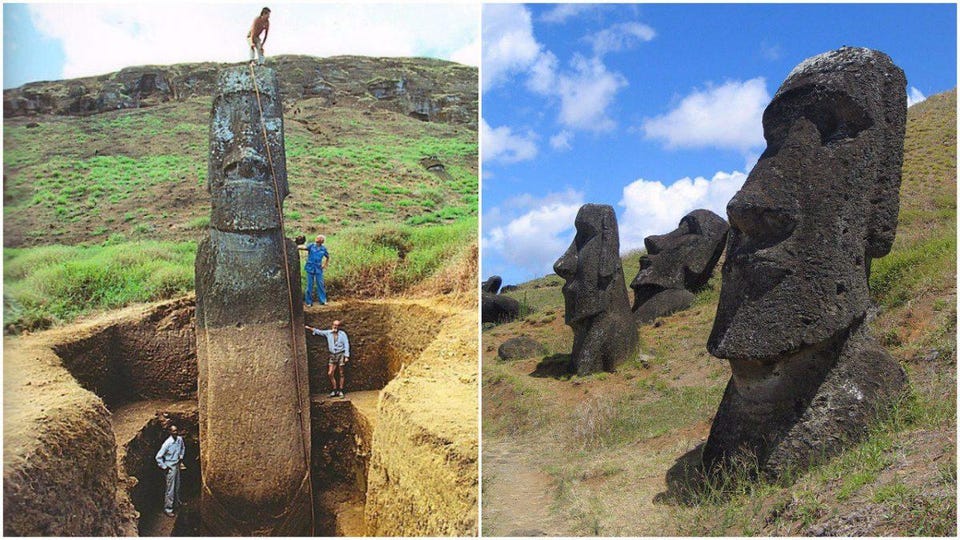
Many things remain a mystery to us. It could be said that all these mysteries exist to provoke deeper thought, and question the world we find ourselves in. Whatever the case may be, the flood legend reminds us how those things we consider permanent today could vanish tomorrow. It therefore behooves us to value the time we have, and use it wisely.
In the words of a modern sage —
“Inquiry is good, but inquire like a proper man in a proper and scientific way. Search for that particular thing which includes the search of everything. Search for that thing which will solve all your problems. Searching after this, searching after A, searching after B, searching after C – dismiss all these mad ideas! Yasmin vijñāte sarvam evaṁ vijñātaṁ bhavati – search for the one thing which will satisfy everything. It is possible. If you get that thing, everything is got. Is it possible? Yes, it is possible.” (Śrīla B.R. Śrīdhara Deva Gosvāmī)
******************
To read more on the story of Zarathustra you can read Kalki Dasa’s article: Zarathustra and the De-evolution of Theism
You can also read the article by Swami B.G. Narasingha on Global Vedic Civilisation
Related Articles
- 📖 When Wise Men Speak Wise Men Listen by Swami B.G. Narasiṅgha Mahārāja (Book)
- Greater Than the Upaniṣads and the Vedas by Śrīla Bhakti Rakṣaka Śrīdhara Deva Gosvāmī
- Religiosity – Real and Apparent by Śrīla A.C. Bhaktivedānta Swami Prabhupāda
- Kṛṣṇa – The Supreme Vedāntist by Śrīla A.C. Bhaktivedānta Swami Prabhupāda
- Rational Vedānta by Śrīla Bhakti Gaurava Narasiṅgha Mahārāja
- Real Religion is not Man-made by Śrīla Bhakti Gaurava Narasiṅgha Mahārāja
- More on ‘Real Religion is Not Man Made’ by Śrīla Bhakti Gaurava Narasiṅgha Mahārāja
- More on Christianity: Only Kṛṣṇa Consciousness Can Enhance Kṛṣṇa Consciousness by Śrīla Bhakti Gaurava Narasiṅgha Mahārāja
- Jesus as a Perfect Christian by Śrīla Bhakti Gaurava Narasiṅgha Mahārāja
- Swastika and Cross by Śrīla Bhakti Gaurava Narasiṅgha Mahārāja
- Star of David or Star of Goloka? by Śrīla Bhakti Gaurava Narasiṅgha Mahārāja
- Does God Exist? by Śrīla Bhakti Gaurava Narasiṅgha Mahārāja
- Tad Viṣṇoḥ Paramaṁ Padaṁ by Śrīla Bhakti Gaurava Narasiṅgha Mahārāja
- Have the Vedas Advanced Civilization? by Śrīla Bhakti Gaurava Narasiṅgha Mahārāja
- The Position of The Bhāgavata Amongst Religious Scriptures by Śrīla Bhakti Gaurava Narasiṅgha Mahārāja
- Avatāras in Every Species by Śrīla Bhakti Gaurava Narasiṅgha Mahārāja
- The History of the Bhagavad-gītā by Swami B.V. Giri
- Jesus in the Vedas by Swami B.V. Giri
- The Great Flood – Are Manu and Noah the Same Person? by Kalki Dāsa
- Zarathustra and The De-evolution of Theism by Kalki Dāsa
Further Reading
- Buddha-Gayā by Śrīla Bhaktivinoda Ṭhākura
- ‘Hindu’ by Śrīla Bhaktivinoda Ṭhākura
- Darśana-Śāstra (Philosophical Treatise) by Śrīla Bhaktivinoda Ṭhākura
- Sukhera Viṣaya (A Matter of Happiness) by Śrīla Bhaktivinoda Ṭhākura
- Śrī-Mūrti-sevā o Pautalikatā (Deity Worship and Idolatry) by Śrīla Bhaktivinoda Ṭhākura
- The Hindu Idols by Śrīla Bhaktivinoda Ṭhākura
- On Durga Siva and Kali in Their Exoteric Aspects: A Criticism on Max Muller by Śrīla Bhaktivinoda Ṭhākura
- Vedānta Darśana (The Vedānta Philosophy) by Śrīla Bhaktivinoda Ṭhākura
- The Bhagavat – It’s Philosophy It’s Ethics and It’s Theology by Śrīla Bhaktivinoda Ṭhākura
Prema Dhāma Deva Stotram with the Narasiṅgha Sevaka Commentary – Verses 61-65
In verses 61 to 65 of 'Prema Dhāma Deva Stotram', Śrīla Śrīdhara Mahārāja narrates the pastime of Śrī Caitanya at Caṭaka Parvata In Purī and explains how the scriptures produced by Brahmā and Śiva are ultimately searching for the personality of Mahāprabhu who is merciful too all jīvas, no matter what their social position.
Prabhupāda Śrīla Sarasvatī Ṭhākura’s Visit to Ayodhyā
With the forthcoming observance of Śrī Rāma Navamī, we present 'Prabhupāda Śrīla Sarasvatī Ṭhākura’s Visit to Ayodhyā' written by Śrīla Bhaktisiddhānta Sarasvatī Ṭhākura Prabhupāda from The Gaudīyā magazine, Vol 3. Issue 21/ In December 1924, after visiting Benares and Prāyāga, Sarasvatī Ṭhākura visited the birth-site of Śrī Rāmācandra in Ayodhyā.
Śaraṇāgati – The Only Path to Auspiciousness
In this article, 'Śaraṇāgati - The Only Path to Auspiciousness', Dhīra Lalitā Dāsī analyses the process of śaraṇāgati (surrender) beginning with śraddhā (faith). She also discusses the role of śāstra and the Vaiṣṇava in connection with surrender.
Ātma Samīkṣā – The Value of Introspection
In this article, "Ātma Samīkṣā – The Value of Introspection" Kalki Dāsa highlights the importance of introspection in the life of a devotee and especially in relation to the worldly environment that surrounds us. He also explains how transcendental sound influences our capacity to introspect.
Prema Dhāma Deva Stotram with the Narasiṅgha Sevaka Commentary – Verses 61-65
In verses 61 to 65 of 'Prema Dhāma Deva Stotram', Śrīla Śrīdhara Mahārāja narrates the pastime of Śrī Caitanya at Caṭaka Parvata In Purī and explains how the scriptures produced by Brahmā and Śiva are ultimately searching for the personality of Mahāprabhu who is merciful too all jīvas, no matter what their social position.
Prabhupāda Śrīla Sarasvatī Ṭhākura’s Visit to Ayodhyā
With the forthcoming observance of Śrī Rāma Navamī, we present 'Prabhupāda Śrīla Sarasvatī Ṭhākura’s Visit to Ayodhyā' written by Śrīla Bhaktisiddhānta Sarasvatī Ṭhākura Prabhupāda from The Gaudīyā magazine, Vol 3. Issue 21/ In December 1924, after visiting Benares and Prāyāga, Sarasvatī Ṭhākura visited the birth-site of Śrī Rāmācandra in Ayodhyā.
Śaraṇāgati – The Only Path to Auspiciousness
In this article, 'Śaraṇāgati - The Only Path to Auspiciousness', Dhīra Lalitā Dāsī analyses the process of śaraṇāgati (surrender) beginning with śraddhā (faith). She also discusses the role of śāstra and the Vaiṣṇava in connection with surrender.
Ātma Samīkṣā – The Value of Introspection
In this article, "Ātma Samīkṣā – The Value of Introspection" Kalki Dāsa highlights the importance of introspection in the life of a devotee and especially in relation to the worldly environment that surrounds us. He also explains how transcendental sound influences our capacity to introspect.


